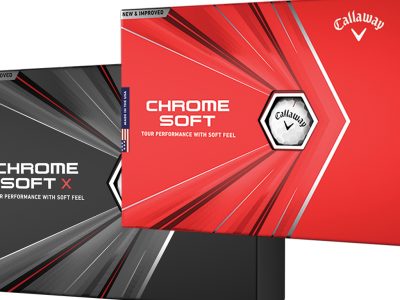By: Ed Travis
My crystal ball has a big crack in it, but I see two new trends worth noting in the golf club business. Both involve the development of clubs with limited appeal and at this point neither can are can’t-miss prospects.
Ultra-High-End Priced Clubs
First, is the appearance of ultra-high-end priced clubs as exemplified by PXG custom-only models. The driver alone carries a tag of $700.00 followed by fairway woods at $500.00 each and a full set of irons at $3,000.00 or more. A bag full of PXGs wouldn’t be complete without the addition of one of their custom-made $400.00-$600.00 putters. That brings the total cost for a complete set of clubs to over $5,000,00, not including a bag. (PXG should throw the bag in for FREE.)
In the past, there have been custom-made clubs at prices much higher than normal retail, but none have made as much of an impression on the overall market in such a short time.
PXG founder and CEO, Bob Parsons said in an interview with Golfweek, he expects $100 million in sales this year, but more significantly, is that his new company will be profitable. That is quite a feat in the golf industry, going from nothing to profitability, in just two years.
Realistically $100 million in club sales is not a very big ripple on the pond compared with Callaway, who expects around $980 million of sales in 2018 and Acushnet (Titleist) with a $1.6 billion forecast for the coming year.
The effect of PXG’s entry into the market is that both of these major manufacturers have decided to compete with PXG for the ultra-high-end priced market. Titleist has priced its C16 driver at $1,125.00 and Callaway’s new Great Big Bertha Epic Star is $700.00. Titleist has priced a complete eight-iron set at $3,000.00, while Callaway Epic irons start at $2,000.00, with the new Epic Star irons at $2,400.00.
How big can this ultra-high-end price market be?
The fact that three major brands, plus Honma, XXIO, Bettinardi, plus a couple of other smaller labels are competing for space in a normally small portion of the golf market and trying to take advantage of whatever high-end market is available.
Of course, the bottom line to entice the deep-pocketed consumers is improved performance. Higher priced equipment must ultimately justify the cost to purchasers, who demand results for their largess.
Superlight clubs for Slower Swing Speeds
The second trend is the increase in the number of superlight clubs being manufactured for golfers with relatively slow swing speeds. These superlight clubs are made to answer the quest for added distance based on the idea if the club weighs less it can be swung faster and add club head speed to generate increased yardage.
Two examples of these superlight clubs are, Cobra Golf’s F-Max series and Callaway’s Epic Star line.
Cobra’s approach is to use an extremely light shaft with a head shaved of extra grams, while the center of gravity has been positioned both to fight a slice and hit the ball on a higher trajectory. Interestingly, at $300.00, the F-Max Driver, as well as, the F-Max irons are priced at the bottom of the spectrum.
Callaway has taken the opposite tack, with the Great Big Bertha Epic Star driver. It weighs in at 286 grams versus last year’s popular, Epic driver, at 310 grams. The Epic Star is for players with slower clubhead speeds. A relatively modest swing speed increase of five mph can produce an additional 15 yards.
The cardinal rule: More speed equals more distance.
Lightweight clubs, especially drivers, have been around since titanium heads and graphite shafts first became the norm. When clubhead sizes reached 460cc, Cleveland produced a 260-gram driver. Overall performance will decide if these latest examples are cost effective. If a $300.00 driver can match the performance of a $700.00 model, well golfers will be able to buy the drastically reduced more expensive model on eBay and the previously used barrels at your pro shop.
It appears the market for superlight clubs is much larger than the ultra-high-end priced clubs, but it will be interesting to watch these trends develop.








